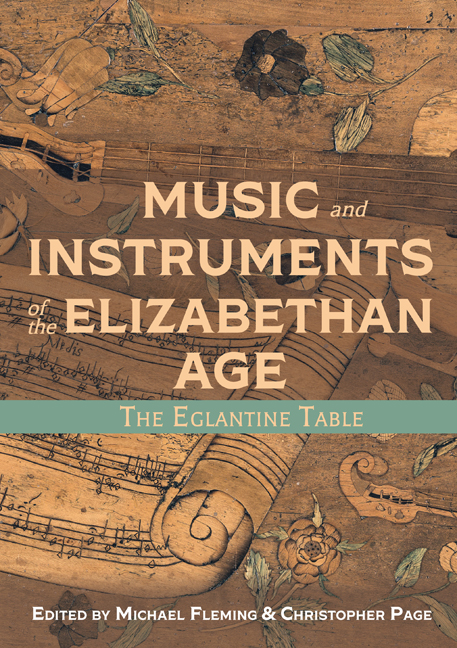Book contents
- Frontmatter
- Dedication
- Contents
- List of Illustrations
- Foreword
- Acknowledgements
- Note to the Reader
- List of Abbreviations
- Introducing the Eglantine Table
- Part I Silent Things
- Part II Music and Instruments
- Part III Broader Views of the Eglantine Table
- Appendices
- Glossary
- Bibliography
- List of Contributors
- Index
- Plate section
Foreword
Published online by Cambridge University Press: 24 March 2021
- Frontmatter
- Dedication
- Contents
- List of Illustrations
- Foreword
- Acknowledgements
- Note to the Reader
- List of Abbreviations
- Introducing the Eglantine Table
- Part I Silent Things
- Part II Music and Instruments
- Part III Broader Views of the Eglantine Table
- Appendices
- Glossary
- Bibliography
- List of Contributors
- Index
- Plate section
Summary
Although books on individual pieces of furniture are exceptional, this is the second work since 2015 to be published about a discrete object in the care of the National Trust. The first, by my friends and former colleagues, Simon Swynfen Jervis and Dudley Dodd, is devoted to the most significant work of art of its kind to have survived from late sixteenth-century Rome: the ‘Pope Sixtus V’ Cabinet of c1585–90 at Stourhead in Wiltshire, with its English carved and partly gilded plinth (1742–3), memorialising its Sistine provenance. A veritable Gesamtkunstwerk, it originally contained an organ. This Foreword introduces a very different, slightly older and also partly musical masterpiece: the Eglantine Table at Hardwick New Hall made in the late 1560s. The marquetry top, rich in images of music and musical instruments, commemorates two dynastic marriages: between Bess of Hardwick and her fourth husband, George Talbot, 6th Earl of Shrewsbury, in 1567, and the marriage of their respective children Henry Cavendish and Lady Grace Talbot on 9 February 1568. Percy Macquoid described this commemorative piece in 1904 as ‘probably the most interesting English table in existence’, while in 1927, The Dictionary of English Furniture declared that its marquetry ‘is probably the most elaborate example of Tudor inlay on this kind of furniture’. It has been extolled as the ‘most celebrated piece of furniture’ at Hardwick and the Derbyshire antiquary Llewellynn Jewitt described it in 1882–3 as ‘one of the most remarkable and curious pieces of furniture in the kingdom’. He provided a simplified rendition of the rhyme in its central cartouche, which gives the Table its name, and which reads in the original:
THE. REDOLENT. SMLE.
OF. ÆLENTYNE
WE. STAGGES. EXAVET.
TO. THE. DEVEYNE
That is to say ‘We [Hardwick] stags exalt the fragrant odour of Eglantine to the divine’. ‘Ælantyne’ (here ‘Ælentyne’) or ‘eglantine’ are variant spellings of the Middle English word for the sweet briar rose, and the design of the marquetry, with the briar roses entwined around the strapwork decoration, is reminiscent of Titania's bank in A Midsummer Night's Dream, ‘Quite over-cannoped with … Eglantine’ (Act 2, scene i).
- Type
- Chapter
- Information
- Music and Instruments of the Elizabethan AgeThe Eglantine Table, pp. xiii - xivPublisher: Boydell & BrewerPrint publication year: 2021

